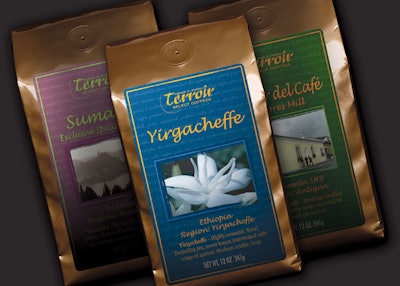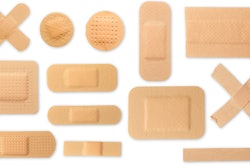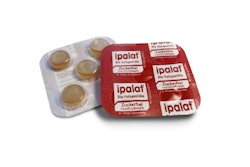
George H. Howell has gone from retail coffee marketing to selecting and roasting unique coffee beans that are marketed by GHH Select under the Terroir Coffee brand. Terroir (pronounced terr-war) is a term often used in the wine business to denote the soil of a particular growing region, each with its own geological and climatic conditions.
Howell created GHH Select in Acton, MA, together with general manager Mark Bishop. He turned to local package designer Wright Design for brand-name development and the unique graphic approach that Terroir uses to showcase its individual coffee bean varieties.
Terroir is now available in specialty stores, some Whole Foods’ stores, and from the company’s Web site. Individual 12-oz packages sell for $9.95 up to about $13.50, so it’s obvious the company has no plans to compete with Folger’s or Maxwell House brands.
“We use the same packaging for retail, Web sales, or mail order,” Bishop points out. “We wanted our packaging and graphics to convey George’s philosophy: finding wonderful beans that we roast and package in very small quantities.”
To highlight a bean’s terroir, each front label includes a photograph that represents the individual farm where that bean was grown. These full-color, hand-applied labels are printed from Wright’s design by Quik Stik/Xygraphix, also known as QSX Labels. It uses a special Soljet EX digital press from Roland that permits short runs of color labels at competitive costs. Grant Graphics, a consultant with Roland, converts the graphics for the press. Most of the photos used on the labels were taken by Howell.
Back labels of the same size are printed black on white with space left so the roasting date and the “open-by” date can be printed using a thermal-transfer printer from Datamax. Back-label copy includes a description of the Terroir process and Howell’s approach to finding and roasting very flavorful coffee beans from all over the world.
As unusual as the labels are, the premade gusseted bags are virtually a stock item for Pack Plus Converting, which makes and prints them at its plant in Taiwan. The material is 5.2 mils thick, using a lamination of aluminum foil and linear-low-density polyethylene that’s printed gravure in the Terroir signature copper color before being covered by an over-lamination of high-gloss 48-ga polyester. The converter adds the one-way, low-density PE degassing valve and glues on the back a black tin-tie for reclosing.
“We sampled lots of different materials before we selected this structure,” Bishop says. “And the company stood behind it and worked with us as we went through our learning curve for packaging.”
Manual operation for now
GHH Select turned to Tridyne Manufacturing for its filling machine. Now used in the manual mode, the filler can also be used in a semi-automatic mode if volumes warrant.
Bottom-sealed bags are opened by hand and inserted under the filling spout. From a hopper, beans drop into the bag, which sits on a load cell. The filler, says Bishop, will drop a bean or two at the end to bring each bag to a precise weight. With its top open, the bag is transferred to a sealer from Packaging Aids that first vacuums out headspace air and then flushes the package with nitrogen just before the top of the bag is sealed. Before packing, the worker then folds the tin-tie tight around the top of the package.
Both front and back labels are hand applied to the bags flat before they’re opened for the filler. That allows GHH Select to date code the back labels right at the time of packaging. “Coffee has a fairly long shelf life in the valve package. Some people say it has six months, but we date our packages for 30 days after roasting and packaging. In addition, we print on the package that the beans should be used within five days of opening the package. Some coffee people consider our dating to be extreme, but what’s important to George and our company is the credibility in his name and in our products.”
Limited varieties
At any given time, GHH Select may offer about 10 to 15 different varieties, from countries all over the world. Some months ago, Bishop tells Packaging World, the company didn’t have a decaf variety because it couldn’t find a coffee that it wanted to sell.
“There are probably three or four different labels that we could order by a thousand, but that’s a ridiculously small number for most converters,” he points out. At the time PW spoke with Bishop, Howell had just returned from Peru and Colombia where he found some small lots that otherwise would have been combined with more commercial-grade beans. “If those farmers had just two bags of high-quality coffee that we’d buy for $2 per pound, it would be a shame if they were forced to sell it for 50 cents per pound,” Bishop explains. In fact, he mentioned that one variety the company soon would be roasting came from a single bag holding 143 lb of beans.
That’s why the photo images are so important to the company. “All are photos that George or I took in country,” Bishop says. “They’re usually at the farm where the product is grown, or of people at the farm. We wanted them to be unique. We wanted to give the shopper a sense of place for the product, as well as give credit to the people responsible.”
To finished product
Much like Howell uses his contacts to locate small lots of beans, Bishop discovered most of the packaging by referral. A label printer that declined GHH business because of the volumes referred the company to Wright Design. “Fortunately, they understood food packaging, and they listened to us talk about our product,” he says. Later, they suggested brand names and graphic approaches that were refined into today’s presentation.
Wright helped GHH Select locate converter QSX for the labels. Grant Graphics’ Skip Grant, the prepress specialist, says the new press uses solvent inks that print well on an uncoated material, generally a vinyl.
For GHH Select, Grant chose a 3.5-mil Classic Plus calendared gloss vinyl with a permanent adhesive on a paper carrier web from FLEXcon. To get the photographic quality, Grant says the labels are printed eight-up at a resolution of 720x1440 dpi. “At this high resolution, the press can print about 75 square feet per hour, or about 400 to 500 labels per hour,” Grant says. “If you’re doing smaller labels, you can reach up to 30ꯠ labels per hour.”
Grant’s specialty is color management, which he says is vital for these labels. A spectrophotometer measures the colors to get the press to match the color of the art. The press, he says, was originally developed to print signage and display graphics in wide-web formats. What makes it great for labels, he says, is that it not only prints, but it also die-cuts the labels with precision.
“This is a perfect application for short-run digital printing because each label is completely different, sharing only the size and material,” says Rob Karess of QSX Label. “The quantities can be as low as the company needs, generally 200 or fewer.” QSX found one limitation to the process.
After a batch of labels had been ganged and printed, GHH Select discovered some scuffing when labels rubbed against one another in a shipping case. “One of the drawbacks to these digital presses is that you’re limited in your choice of a protective finish,” Karess says. To add protection to the printing, QSX now sheets the printed labels and then screen prints an ultraviolet coating over the labels after the ink has cured.
The back label, from M & M Label, is a thermal-transfer substrate printed flexo in a single color. The label has an imprintable UV coating on it that allows GHH Select to add variable data just prior to application and packaging.
GHH Select’s Terroir Coffee is only available in a few stores because many of the stores have to be sold individually. “Stores don’t always have the same varieties of produce, and the same is true for coffee,” says Bishop. “Many of the specialty stores like the uniqueness of our products and our packaging. But we won’t be in mainline grocery stores, where they demand one Colombian variety. We usually have Costa Rican coffee, and beans from Kenya, Peru, Ethiopia, Guatemala, and Indonesia.
“Unlike most packaging, our logo is tiny on our package. We wanted our labels to resemble those of wine bottles, to tie in with our brand name,” concludes Bishop.















